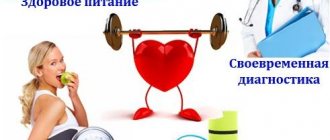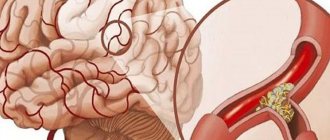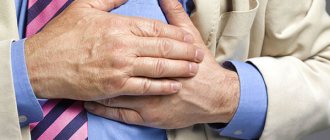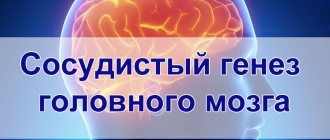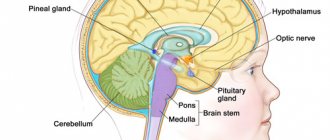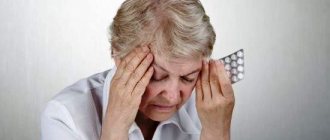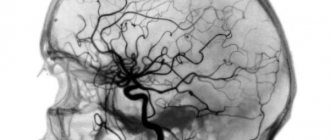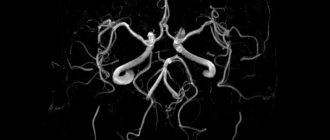They discovered a spasm of cerebral vessels, quite strong. They prescribed me to take Actovigin. Tell me, please, maybe someone knows how to live with this, etc.? To be observed periodically, to lead a normal lifestyle - this is all clear.. Stories from the lives of people with the same diagnosis are interesting.. How does this affect pregnancy and childbirth? can you give birth yourself?
I don't know what this procedure is called. The tone of cerebral vessels was assessed. We put sensors on the head. You had to close your eyes and do what the doctor said: turn your head left, right, down.
I also have this spasm. And just from the neck - she was in the other direction and with the letter “g”, taking pictures. Well, nerves, stress, etc. Endless headache.
I always treat teeth without anesthesia, I always endure it.
It’s easy, for 12 years now, after the ambulance pumped me out in the dentist’s chair, and then I saw double. and the roots are cleaned alive, and sealed, and everything else. Now I’m just trying not to let this happen, I’ve treated all my teeth, I hope it will last for a long time. I even burned out bedsores on my gums this way - they just sprayed lidocaine on a piece of cotton wool and put it on the gum for a while, then they burned it off with a hot dental hook - it’s normal, it doesn’t hurt.
In general, vascular spasm is a type of panic attack, the most common neurosis. I have to learn to cope with this - it took me 7 years, and I haven’t fully learned yet.
Cerebral vasospasm refers to transient disorders of cerebral circulation and is a cerebral type of hypertensive crisis. It is short-term in nature, accompanied by dizziness, diffuse headaches, nausea, disorders of consciousness, vision, and hearing.
Signs of vasospasm can appear at any age, including in children. Causes include hereditary factors, various chronic diseases, and injuries. Treatment is complex: symptomatic (taking antispasmodics, sedatives) and etiological, aimed at eliminating the causes of spasms.
For what reasons does spasm occur?
There are many factors that cause spasm of cerebral vessels. Conventionally, they can be divided into external ones, depending on a person’s lifestyle, the characteristics of his work, age-related changes, and internal ones - diseases, body structure, the quality of metabolic processes.
External factors
People dependent on weather conditions are susceptible to discomfort. Negatively affects the human body and causes vasospasm:
- Smoking . Nicotine poisoning is the most common cause of headaches and cerebral vascular spasms. Even one cigarette can lead to dizziness and spots in the eyes.
- Overwork . Can be physical, mental, emotional. Young brides at a wedding experience a headache at the end of the holiday caused by overwork and excess impressions.
- Lack of sleep . Regular lack of sleep, unstable routine, late going to bed and getting up too early do not allow the brain to fully rest.
- Oxygen starvation . Staying in smoky, unventilated rooms, living for a long time in a polluted city also leads to problems with the vascular system.
With age, the elasticity of blood vessels decreases; cholesterol plaques growing on the walls of the arteries lead to atherosclerosis. Together, these factors cause a gradual narrowing of blood vessels, which leads to prolonged headaches and causes spasm of cerebral vessels
Internal reasons
Chronic diseases and acute inflammatory processes provoke spasms of cerebral vessels.
- Vegetative-vascular dystonia and other heart diseases. Unstable pressure and heart rhythm failure lead to vascular overstrain and sudden compression.
- Osteochondrosis. The disease develops in a person who leads a sedentary lifestyle, performing monotonous work in an uncomfortable position. As the neck muscles become stiff, mobility decreases and the arteries supplying the brain are pinched. As a result, the development of narrowing of the vascular bed.
- Diabetes. Damage to capillaries and arteries occurs due to surges in blood sugar. High sugar levels are not as dangerous as low ones; they cause nausea and dizziness due to constricted blood vessels in the brain.
Pathological narrowing of blood vessels is caused by:
- Aneurysm.
- Kidney and thyroid diseases.
- Brain tumors.
- Traumatic brain injuries.
People with alcohol addiction and excess weight are susceptible to spastic headaches. Sometimes spasms of the blood vessels in the head appear for no apparent reason in completely healthy people.
Symptoms
The latter phenomenon is caused by circulatory disorders in the ophthalmic artery associated with the cerebral ones. Therefore, with vasospasm, the tone of the eye muscles changes and the blood supply to the retina deteriorates. Due to this, the patient cannot focus his vision and complains of darkening and flickering of black dots before the eyes. In addition, dysfunction of the autonomic nervous system negatively affects the condition of the blood vessels of the whole body: pressure increases or decreases, sweating increases, the face turns red, and sweating increases.
Increased intracranial pressure
Under the influence of various provoking factors, the circulation of cerebrospinal fluid in some parts of the skull is disrupted. The result is a lack or, on the contrary, an excess of cerebrospinal fluid.
Normally, a person secretes 1 liter of cerebrospinal fluid per day. This fluid is continuously absorbed into the blood vessels of the brain. This does not happen against the background of various pathologies. As a result, the cerebrospinal fluid puts pressure on the ventricles of the brain. In this case, it is customary to talk about increased intracranial pressure.
The reasons for the development of this pathological condition are extremely serious:
- Large tumors located in the brain. They can be either benign or malignant.
- Encephalitis.
- Meningitis.
- Thrombosis of the venous sinuses.
- Hematomas formed as a result of various types of head injuries.
- Eclampsia.
- Ischemic stroke.
- Hydrocephalus.
- Hypoxia.
- Severe intoxication process.
The main symptom of increased intracranial pressure is a severe headache of a spastic nature. As a rule, it bothers you in the morning.
Vasospasm during VSD
Vasospasm during vegetative-vascular dystonia manifests itself as a vascular crisis. This is a pathological condition when, against the background of circulatory disorders, the filling of blood vessels unexpectedly changes. Crises are regional and systemic. The former are characterized by local disturbances in the blood supply to organs and tissues. The latter reduce or increase the tone of the arteries or veins, which is manifested by a sharp decrease in blood pressure.
When spasms affect the organs:
- heart vessels, which narrows the lumen of the coronary arteries;
- blood vessels of the head as a result of overwork and lack of sleep;
- ocular vessels due to impaired vascular circulation;
- peripheral vessels against the background of activity of the sympathetic nervous system and sharp stimulation of the adrenal glands.
With VSD, muscle spasms
With VSD, a person's skin sensitivity changes. A tense muscle puts pressure on neighboring tissues and nerve endings. This leads to movement disorders. In this condition, muscle groups contract sharply, causing repetitive movements, twisting, or an inability to assume proper position due to cramps and spasms. Symptoms may be mild at first, but then become more frequent and painful. Numbness or tingling may occur.
It happens that spasms do not progress. An example is torticollis, when a spasm prevents the head from turning, or blepharospasm, when a person cannot control the blinking of the eye.
During anxiety and emotional experiences, spasms intensify and decrease with relaxation.
Materials used in the article:
https://medicinein.ru/kak-snyat-spazmyi-sosudov-golovyi.html
https://krampf.ru/o-spazmakh/18-spazmy-pri-vsd
https://etodavlenie.ru/dav/bolezni/spazmy-pri-davlenii.html
Post Views: 186
External manifestations of the disease
What are the most common symptoms of cerebral vascular spasms? All patients faced with this problem complain of headaches of a different nature: pressing, squeezing. Points of discomfort appear in different areas of the head: frontal, occipital, temples. The intensity of the discomfort depends on the severity of the disease. In addition, patients complain of the following symptoms:
- dizziness;
- nausea and vomiting;
- ear noise, ringing in the ears;
- decreased performance, rapid fatigue;
- loss of attention, impaired concentration;
- problems with speech, coordination;
- eye pain, flickering, appearance of “floaters” before the eyes.
People who often suffer from cerebral vascular spasms indicate symptoms such as a feeling of goosebumps on the back of the head, numbness of the limbs, facial skin, and head.
How to relieve headaches during pregnancy
Expectant mothers complain of headaches during pregnancy.
Doctors note the frequency with which they are contacted at this time: every fifth patient registered at the dispensary for pregnancy has a similar problem. To completely get rid of it, it would be correct to find out the reasons. The main thing to understand is that self-medication is dangerous. The cause of the malaise is, more often than not, compression of the brain. lead to various disturbances in the functioning of the body. Sometimes it is not the inside of the head that hurts, but the soft tissues covering the bones of the skull - the scalp.
But these medical subtleties are important for specialists in order to correctly diagnose and prescribe adequate treatment, if we are not talking about an isolated case of this condition.
When a headache occurs for the first time, which significantly affects the general condition, a woman should measure her blood pressure. If it is normal (120/70 mmHg - average for most healthy people), then taking paracetamol will be enough.
The drug in small quantities, if used rarely, does not have a harmful effect on the fetus and is safe throughout pregnancy.
Although it is better not to take these tablets on an empty stomach. They are a little bitter and cause discomfort, including nausea or even vomiting.
With long-term, frequent use in large doses, the medicine causes problems in the liver, kidneys, and has a bad effect on the circulatory system. But it is considered a safe drug used with caution by pregnant and breastfeeding women. In isolated cases, to relieve pain, a pregnant woman can take (inject) one of the paracetamol-based drugs:
| Name of drugs | Release form | Dose of active substance – paracetamol | Method of administration to the body |
| Acetaminophen | Film-coated tablets | 500 mg | Ingestion – orally with water |
| Panadol | Tablets, film-coated and soluble | 500 mg | Orally, with water, dissolved in 200 ml of water |
| Flutabs | Effervescent tablets | 500 mg | orally, dissolved in 200 ml of water |
| Efferalgan | Soluble tablets | 500 mg | orally, dissolved in 200 ml of water |
| Perfalgan | Solution for infusion | 10 mg/ 1 ml | Intravenously (according to a doctor's prescription, under the supervision of doctors and nursing staff) |
Administration should be limited in dose (no more than 1000 mg per day) and duration (no more than 5 days).
If a pregnant woman has diseases that are associated with impaired hematopoiesis (anemia, thrombocytopenia), decreased immunity, insufficient liver and kidney function, a history of hepatitis, dehydration, or takes other medications as prescribed by a doctor, then paracetamol should not be taken without consulting a specialist. If this pain occurs frequently or is constant, then you need to contact a family planning medical center, antenatal clinic or clinic at the place of residence where the patient is registered.
An examination by a specialist and the results of the diagnostic procedures prescribed by him will help determine whether the pregnancy is proceeding normally and what was the cause of poor health. The doctor will prescribe medications to treat the disease causing this symptom.
Common causes of headaches during this period:
- Diseases of the genitourinary system.
- Dehydration (with early toxicosis with severe, frequent vomiting; with insufficient water intake).
- Hypertension is high blood pressure.
- Hypotension – low blood pressure.
- Hyperglycemia is an increase in blood sugar levels.
- Hypoglycemia is a decrease in this indicator.
- Hormonal disorders, such as thyroid dysfunction.
- Anemia.
- Cerebrovascular accident.
- Inflammation of the middle ear.
- Sinusitis.
- Dental problems.
- Eye diseases, visual impairment.
- Migraine.
- A brain tumor.
- Ischemic or hemorrhagic stroke.
- Traumatic brain injury.
- Meningoencephalitis and meningitis (inflammatory process in the brain and its membranes).
- Stress, lack of sleep, nervous exhaustion.
- Early toxicosis.
- Preeclampsia (last trimester).
- Osteochondrosis of the cervical spine.
- Poor posture in the third trimester associated with weight gain.
All these reasons show how important it is to visit a doctor for routine check-ups or if any other symptoms that trouble the pregnant body occur.
Possible complications
To understand what discomfort will lead to, you need to know what cerebral vasospasm is. In normal condition, the smooth muscles of arteries, veins, and small capillaries contract rhythmically. Pressure surges and the growth of cholesterol plaques disrupt cerebral blood flow, causing sharp compression and spasm. In this case, rhythm disturbance is accompanied by painful sensations. Consequences of spasm:
- cerebral circulatory disorders;
- aneurysm;
- hemorrhage into the cranial cavity;
- cerebral ischemia;
- tissue necrosis;
- stroke.
If a spasm causes a malignant neoplasm in one of the organs, a possible consequence may be the development of brain cancer.
Constriction of blood vessels in the brain
Narrowing of cerebral vessels is most often caused by atherosclerosis, hypertension and osteochondrosis, and congenital hypoplasia also occurs. With a gradual decrease in patency, headaches, dizziness (with dilated and narrow arteries), and tinnitus occur. If the narrowing is sharp, then there is a risk of stroke or ischemic attack (impaired movement, speech, sensitivity).
We recommend reading the article on how to dilate blood vessels. From it you will learn about indications for vasodilation, the use of medications, folk remedies, and methods of strengthening blood vessels. And here is more information about carotid artery stenosis.
Reasons that narrows
The lumen of the brain vessels narrows for the following reasons:
- cholesterol deposition in atherosclerosis;
- increased blood pressure;
- compression due to osteochondrosis.
Atherosclerosis causes stenosis (narrowing) of the arteries of the head in 60% of cases. Patients are predisposed to it:
- leading a sedentary lifestyle;
- smokers;
- in whose family blood relatives had vascular lesions of the heart, brain, lower extremities (heart attack, stroke, intermittent claudication);
- those who consume predominantly fatty foods (meat, butter, cream, cheese, fast food), fried foods;
- with obesity;
- those suffering from diabetes;
- male, especially after 45 years;
- women at the onset of menopause.
Hypertension can be an independent disease or occurs against the background of:
- kidney diseases (pyelonephritis, glomerulonephritis, polycystic disease, narrow vessels due to congenital anomalies);
- endocrine disorders (damage to the adrenal glands: excess aldosterone, cortisol, adrenaline or pituitary gland, thyroid glands);
- neurological disorders - skull trauma, stress, neuroinfection.
Impairment of the patency of the vertebral arteries supplying the brain is caused by:
- osteochondrosis;
- instability of the cervical vertebrae due to trauma, features of the anatomical structure;
- reflex spasm due to narrowing of the veins, stagnation of blood, impaired blood outflow.
Impaired patency of the vertebral arteries causes osteochondrosis.
More rare causes include:
- arterial hypotension;
- inflammation of the vascular wall (vasculitis);
- heart rhythm disturbances;
- a sharp change in blood pressure.
Development mechanism
In atherosclerosis, due to high levels of cholesterol in the blood, low-density lipoprotein complexes are deposited in the artery wall. They call:
- decreased arterial patency;
- the formation of plaques that inhibit blood flow;
- rigidity of the walls of blood vessels (they quickly spasm and dilate weakly).
If the surface of the plaque is destroyed, platelets rush to the site of damage. A forming blood clot can completely stop the brain's nutrition. In this case, a stroke develops.
In hypertension, in response to high intravascular pressure, the arterial wall thickens, and a reflex vascular spasm occurs. It is necessary to protect tissues from excess blood supply. In the case of osteochondrosis, arterial stenosis is caused by mechanical compression of the vertebral artery by bone growths.
All these processes have a common result - the amount of blood flowing through the narrowed vessel decreases. The nutrition of brain tissue suffers. In this case, foci of small infarctions arise; they do not give a typical clinical picture (“silent”), but lead to interruption of connections between the cortex and subcortex of the brain.
Because of this, the following functions are gradually disrupted:
- knowledge,
- emotions,
- coordination of movements.
At the initial stage, these changes are still reversible, but over time they reduce thinking, hearing, speech, and memory so much that the person becomes disabled and loses the ability to self-care.
Watch the video about vascular atherosclerosis:
Why there may be a sharp narrowing
A sharp narrowing of the lumen of the arteries of the brain causes:
- blockage with cholesterol plaque;
- thrombosis (blocking with a blood clot);
- embolism (entry into the vessel of part of a blood clot formed in the heart during atrial fibrillation, heart attack, valve damage);
- vascular spasm due to stress, a sharp increase in pressure, the release of adrenal hormones during physical or emotional stress, dehydration, or skull injury.
The result of a sudden cessation of blood flow is cerebral ischemia. It can be temporary (transient attack) or irreversible (stroke). Their symptoms are similar, but with a transient weakening of blood flow, they disappear within a day:
- weakness in the limbs on half the body;
- loss of sensation;
- speech disorders;
- facial asymmetry (visible when trying to smile or raise eyebrows).
Congenital narrowing
If during pregnancy a woman is influenced by unfavorable factors (infection, diabetes, smoking, alcohol), then congenital narrowing of cerebral vessels may occur. This developmental abnormality is called hypoplasia. The artery is formed with a thin muscular membrane, it is fragile.
The brain cells do not receive enough nutrition, but since there is the possibility of bypass routes for the blood supply, there are no symptoms for a long time. With increased stress (childbirth, professional sports, acute stress) or age-related changes (atherosclerosis, hypertension), congenital stenosis can cause an acute vascular accident - rupture of a vessel or blockage (hemorrhagic or ischemic stroke).
What are the dangers of cerebral vasoconstriction?
Constriction of the blood vessels in the brain is dangerous because, due to insufficient blood supply, cells lose the ability to perform their functions, which manifests itself in the form of numerous neurological disorders:
- memory loss,
- insomnia,
- dizziness,
- headache,
- fast fatiguability,
- irritability,
- depression.
If the cause of stenosis is eliminated at the initial stage, the impaired functions can be almost completely restored. After the lumen of the artery is reduced by more than half, the condition quickly worsens, motor and mental disorders develop, and intellect and thinking weaken.
During this period, the risk of acute disruption of blood flow and irreversible destruction of part of the brain (stroke) increases. This threatens the loss of physical and mental disability. The severe course of this vascular pathology has an unfavorable prognosis due to damage to vital centers and respiratory and circulatory arrest.
Watch the video about vasoconstriction:
When dizziness occurs, the blood vessels are dilated or narrowed
The feeling of dizziness occurs with both dilated and narrowed blood vessels. This symptom is not specific and can occur even with a temporary disturbance in arterial tone - vegetative-vascular dystonia, changes in blood pressure, changes in pulse rate, as well as osteochondrosis. Signs that dizziness is of vascular origin:
- unsteadiness when walking;
- noise in the head;
- headache;
- fatigue due to mental stress;
- memory loss.
If these clinical manifestations are absent, then it is necessary to exclude diseases of the middle ear, auditory nerve, and the presence of a tumor process.
Clinical picture
In order to know how to relieve a spasm, it is necessary to understand in more detail the process of its occurrence.
Important! You can take any medications only with your doctor's permission.
From the inside, veins, vessels, arteries are smooth, contract according to the following algorithm:
- a signal is sent through the nerve endings and can be transmitted through hormonal cells in the blood;
- electrolyte ions change, they in turn are responsible for the membrane discharge that occurs;
- spasm begins.
If at least one stage fails, a disruption in the functioning of the brain may occur. When used correctly, medications can have the desired effect.
Example of blood flow during vascular spasm
We cannot exclude the possibility that the body reacts to temperature changes in this way; it could also be a reflex to the development of some disease.
Treatment with folk remedies
Folk remedies for narrowed blood vessels in the brain
Folk treatment for pronounced or initial cerebral atherosclerosis is drinking medicinal decoctions and tinctures and other traditionally used methods.
When treating arterial pathology with folk remedies, they often drink homemade preparations made from plant materials:
- A decoction prepared from pine shoots. If you drink a spoonful of this decoction once a day, your blood pressure will normalize, vitamins will enter your body, and your arteries will dilate.
- St. John's wort infusion (a spoonful of St. John's wort in a quarter liter of boiling water) helps to dilate blood vessels.
- There is a popular belief that hawthorn decoction is a good remedy for vasoconstriction. It provides nutrients to the heart muscle, relieves spasms, and ensures vasodilation. This decoction is also useful for strengthening the immune system.
- Clover tincture also copes well with the first signs of atherosclerosis. To prepare it, you should take any glass container and fill it to the top with the flowers of this plant, then fill them with vodka and close tightly. Keep in a dark place for two weeks.
Of course, such decoctions can only complement the main drug treatment prescribed by the doctor.
Diagnostic tests
You need to be examined not only if unpleasant symptoms of cerebral vasospasm appear, but also if a person is at risk:
- abuses alcohol;
- suffers from nicotine and drug addiction;
- his parents suffered from strokes, heart attacks (even one of them);
- he has been diagnosed with hypertension.
The examination is also carried out after a concussion or head injury. If a spasm of the cerebral arteries is suspected, the doctor may suggest the patient undergo the following procedures:
- Brain MRI . Examination of brain vessels allows one to determine the strength of blood flow, clarify the condition of blood vessels, and identify nodes and pathological narrowings.
- Ultrasound Doppler of the cervical spine, head. Helps obtain data on thrombus formation and narrowed blood vessels.
- MRI of the neck. They will allow you to examine the bed of the carotid and cervical arteries.
- X-ray of the brain . Does not reflect an accurate picture if the patient develops cerebral spasm, but indicates areas of hemorrhage, if any.
Additionally, tests are required: blood clotting and sugar levels. An exact list of procedures can be obtained from your doctor.
Risk factors and pathophysiology
Symptoms of vasoconstriction are often expressed in the form of difficulties with remembering information, sudden mood changes for no particular reason, and unsteady gait. To understand how to treat disease-prone arteries, you need to become familiar with the factors underlying the pathology.
Atherosclerosis occurs due to the fact that cholesterol plaques accumulate on the inner surface of the brain (and not only) arteries, resulting in a narrowing of the blood vessels in the head. Blood flows more slowly through narrow arteries and veins.
When the vessels of the head and neck are narrowed, the brain begins to experience more and more severe oxygen starvation, which is accompanied by a disruption of many of its functions. Moreover, the resulting plaques can completely clog the passages in the arteries. This is a very dangerous phenomenon that leads to a variety of health problems.
Diagnosis of the disease
If you experience frequent dizziness and headaches, you should consult a doctor, because spasm of the arteries without treatment leads to various complications. To find out the cause of the pathological condition, a specialist interviews the patient, measures blood pressure, studies the results of blood tests and the condition of the blood vessels of the eyeball.
To make an accurate diagnosis, an MRI or X-ray of the cervical spine is performed, as well as a magnetic resonance examination of the vessels of the head. Duplex scanning is performed to assess the condition of the arteries, the speed of blood flow and detect plaques and blood clots.
The most informative will be CT or MRI, which are performed using a contrast agent. Based on the patient’s complaints and research results, the doctor makes a diagnosis and prescribes treatment.
What to do?
The basis for the diagnosis of vegetative-vascular dystonia can be provided by comprehensive studies of the cardiovascular and endocrine systems, and a study of blood biochemistry.
Based on MRI, ultrasound and X-ray data of the brain and cervical spine, Doppler studies, the attending physician prescribes drug treatment. The use of vasodilators, restoratives, and nicotinic acid is indicated. With VSD, sports activity is indicated, aimed at relieving excessive muscle tension, and a contrast shower, which will strengthen the walls of blood vessels and make them more elastic. Giving up bad habits, a balanced healthy diet, in which fats are limited, and the consumption of vegetables containing B vitamins, potassium, and magnesium are increased - help fight VSD. Taking sedatives based on valerian, motherwort, and lemon balm will help relieve nervous fatigue, relieve throat spasms and muscle tension.
Treatment
Only a doctor can prescribe treatment for cerebral vasospasm. The course of the underlying disease that caused the discomfort must be taken into account. Sometimes it is enough to relieve the exacerbation of osteochondrosis or improve blood pressure and spasm of arteries and small vessels will stop bothering the patient, and the condition of the brain will improve.
General therapy includes the use of medications, physiotherapeutic procedures, and adherence to a daily routine. If the doctor allows, the patient can use traditional medicine recipes for treatment.
Quick relief from pain
What to do if a headache strikes at the most inopportune time, how to relieve spasm of cerebral vessels? At home, if it is not possible to call a doctor, simple treatment methods are used that can relieve an attack for a short period of time:
- If you feel a vascular headache, you can take off your shoes, run a stream of cold water on your feet, or put your feet in a bowl of cold water. It is enough to carry out the procedure for 7-10 minutes, then vigorously rub your feet.
- Some patients are advised to shower. Warm water helps you relax and relieve tension.
- You can use an ice pack applied to the point of the head where the pain occurs.
- Warm water, chamomile tea with a tablespoon of honey helps relieve cerebral vascular spasm. Can only be used by those who are not allergic to honey.
- Light self-massage of the cervical and shoulder region helps eliminate muscle spasms. This improves blood circulation in the brain and eliminates dizziness.
It is impossible to use only homemade painkillers for vascular spasm for a long time, this can lead to a worsening of the condition and necrosis of brain tissue. If you have recurring headaches or cerebral circulatory problems, you should seek medical help.
Drug therapy
Sometimes simply treating the underlying disease is not enough. To get rid of headaches, you need to take special medications. For spasm of cerebral vessels, the doctor may prescribe a set of medications.
Antispasmodics . People often take drugs in this group even without a doctor’s prescription. They relieve spasm of large and small vessels, relaxing smooth muscles. It is recommended to use antispasmodics for rare, short-term attacks of acute pain.
Statins and fibrates . Used to prevent the development of atherosclerosis. They increase the strength of blood vessels and flexibility. Normalize their patency.
Calcium channel blockers . New generation drugs have a general strengthening effect, with regular use they help avoid acute attacks and normalize cerebral circulation.
Nootropics . These drugs improve cellular metabolism in the vascular walls, eliminate fragility and fragility of blood vessels, and have antioxidant properties.
Consequences
Vascular spasm can be both a cause and a consequence of acute cerebrovascular accidents - hemorrhagic stroke, rupture of an aneurysm. In case of intense pain, loss of consciousness, impaired coordination, speech, you should immediately seek medical help.
A prolonged attack can lead to ischemic stroke with death of brain tissue and disability. In children, prolonged vasospasms can cause further delays in mental development, and in pregnant women - eclampsia. This condition is considered the most severe form of gestosis, fraught with coma, pulmonary edema, and fetal death.
Therapeutic measures
It is important to understand that treatment of the pathology is necessary, as dangerous complications can develop, including ischemic stroke. So, therapy is primarily aimed at restoring normal blood flow.
For this, the patient is usually prescribed to take antispasmodics and vasodilators. With their help, you can expand arteries and veins, eliminate pain, and also improve nutrition of tissues and organs.
How to increase blood pressure at home
Once the attack is eliminated, it is necessary to establish the true reason why it occurred. For diagnosis, doctors resort to both instrumental and laboratory techniques.
Once the source of the problem is identified, the treatment plan will be slightly modified. Drugs will be prescribed not only to relieve spasms, but also to treat the underlying disease. To speed up the healing process, acupressure may be indicated.
Folk remedies can also be used to normalize the condition, but only after consulting your doctor. A decoction of chokeberry, viburnum and hawthorn works well against spasms.
Traditional methods of treating vascular spasms
There are also folk methods that help relieve spasms of blood vessels in the head at home. One of them is thyme infusion. It is not difficult to prepare: steam 2 small spoons of thyme in 1 liter of boiling water and leave for an hour, add 5 drops of golden mustache juice and take the resulting infusion twice a week, 100 g each.
Another excellent remedy for treating vasospasms is garlic. The crushed head of garlic should be placed in a jar. Leave a glass of unrefined sunflower oil in the refrigerator for 24 hours. Add a teaspoon of garlic and lemon juice to the oil. Take the resulting mixture 1 teaspoon in the morning, afternoon and evening for a period of 1 to 3 months.
What will help strengthen blood vessels?
For treatment, it is not enough to simply take medications and hope that vascular pain will no longer bother you. To improve your health, you need to change your lifestyle, eat right, and exercise.
Diet . Since the most common cause of cerebral vascular spasm is atherosclerosis, patients are advised to adhere to a diet that does not allow the growth of cholesterol plaques on the walls of the arteries.
- Eat more plant foods and nuts.
- Give preference to lean meat.
- Avoid marinades and smoked meats.
- There are fermented milk products.
- Reduce the amount of salt and sugar consumed.
- Eat fatty sea fish.
- It is worth giving up chocolate, coffee, soda, and fast food.
- Do not abuse alcohol.
Each person should drink an average of 1.5-2 liters of liquid per day. This helps maintain water-salt balance in the body. When calculating, it is recommended to take into account milk, juices, and soups. According to recent studies, one of the products that helps dissolve plaques and eliminate the symptoms of atherosclerosis is cherries. You can eat fresh berries or frozen or dried.
Features of the lifestyle . Headaches can be avoided by following a healthy lifestyle.
- Get a good night's sleep. Sleep should be at least 8 hours. To make it easier to fall asleep, it is recommended to ventilate the room in the evening.
- Avoid overload at work. If you have to constantly be in one position, you should periodically do exercises and change your body position.
- Avoid stress and scandals. To strengthen your psyche, you can engage in auto-training.
- Allow feasible physical activity. Go for walks, ride a bike, play tennis.
To prevent cerebral vascular spasm from becoming permanent, you need to consult a doctor at the first signs of the disease. Taking medications, following the recommendations of a specialist, and an active lifestyle will help get rid of vascular pain and eliminate the unpleasant symptoms of cerebral vasospasm.
Basic methods of treating spasms of blood vessels in the head
Treatment for vascular spasms in the head depends on the cause of the disease. Restorative complex of the vascular system should be the first step in any treatment. It is also important to follow a diet, exercise, try to remain calm, get proper rest, sleep, and give up bad habits.
For atherosclerosis, the doctor prescribes treatment that eliminates blood clots and plaques by feeding the brain with nutrients, oxygen and blood.
Blood thinning medications may be prescribed. If you are overweight, you need to take measures to lose weight, give up salty and fatty foods, and eat raw fruits and vegetables. Walking tours may also be prescribed.
Medicines
The doctor may prescribe symptomatic treatment aimed at improving cerebral circulation. These are drugs such as aminalon, papaverine, dibazol, pentalgin, baralgin, etc.
It is possible to treat with stem cells, which dissolve plaques, while improving vascular permeability. And in some cases, surgical treatment may be necessary. It will be effective when the vessel is not completely blocked.


